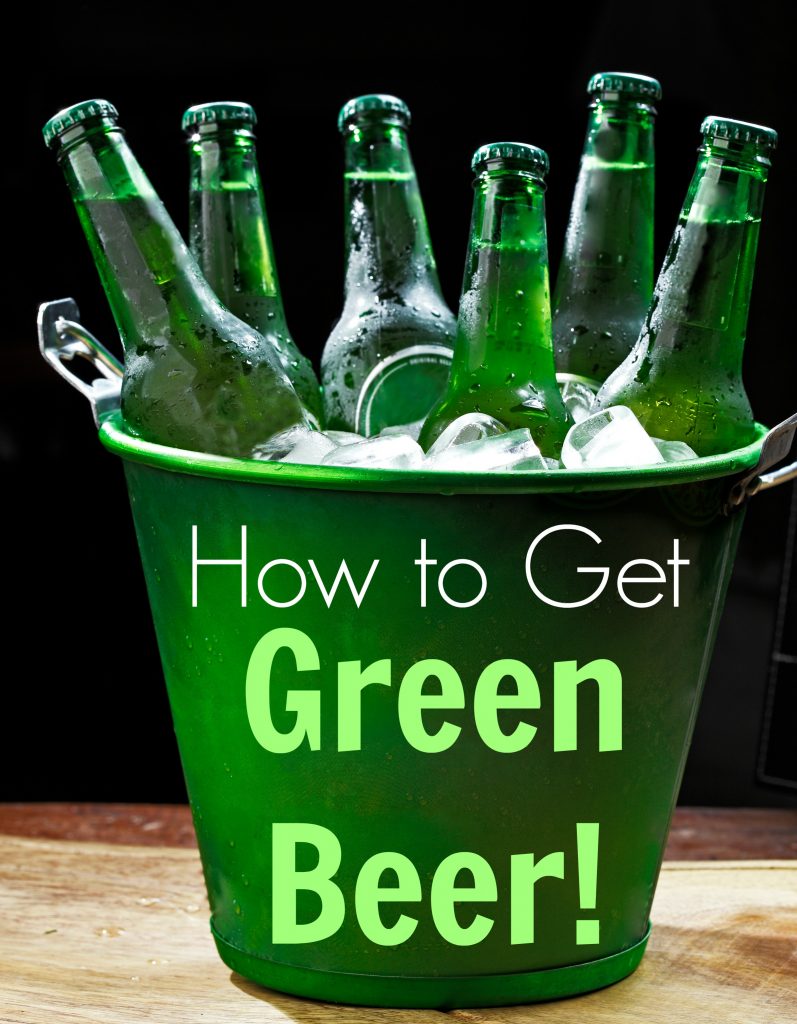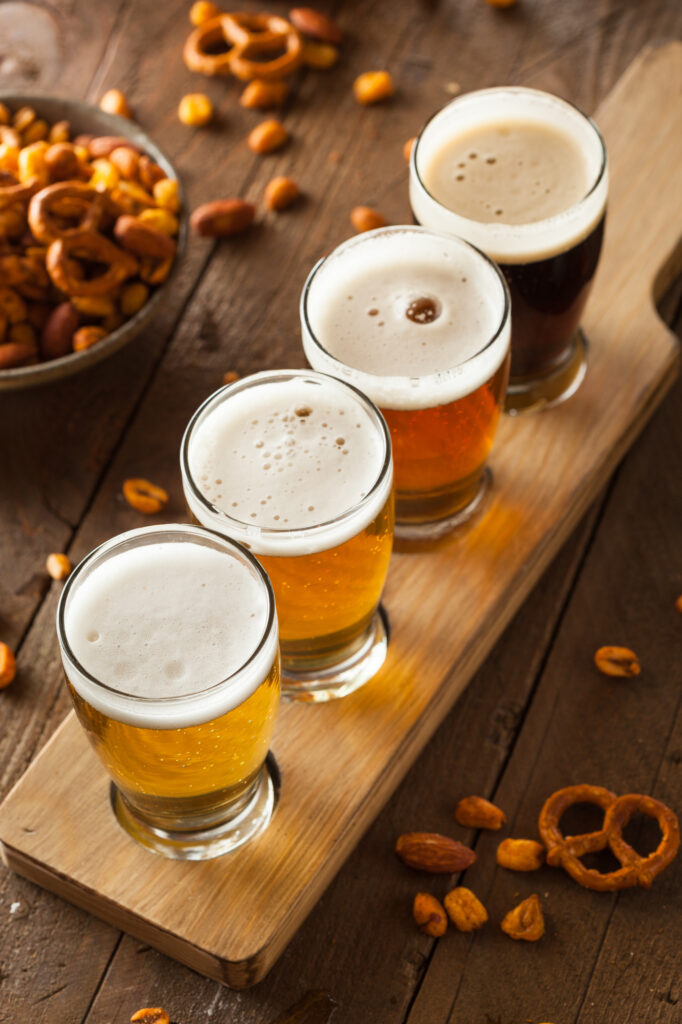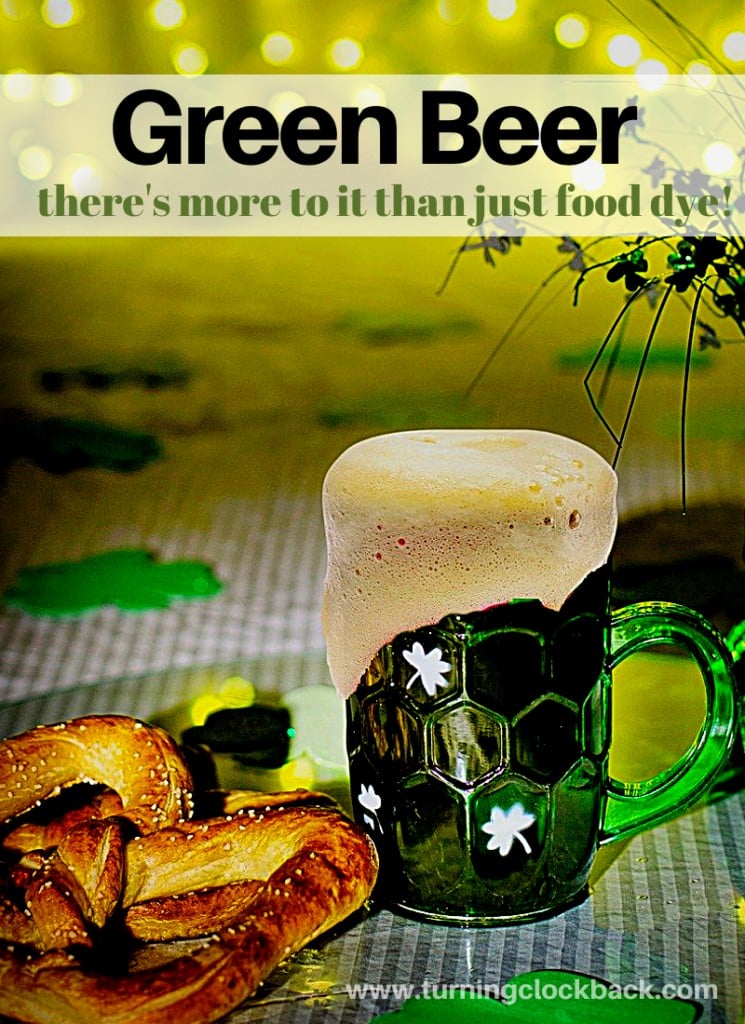This month, a scroll through Pinterest will show you all sorts of green snacks, green beer, and green foods in general. Neon green cookies and rainbow-colored cakes seem to catch everyone’s eye this month.
In honor of spring, people dye chicks a rainbow of colors and dump green dye in rivers. Is this obsession with all things green a good thing? If you are asking yourself how to get green beer for Saint Patrick’s Day, I want you to stop and think about something.
Instead of looking for a beer that is the COLOR green, how about you focus on the kind of green beer that reduces its carbon footprint on this planet?
Posts feature partner companies & may be sponsored. Post contains affiliate links & I will be compensated if you make a purchase after clicking on links. As an Amazon Associate I earn from qualifying purchases.

Table of Contents
Is there a green beer? That depends on what you mean!
Beer is the most widely consumed and probably the oldest alcoholic beverage known to man. It’s the third most popular beverage, following only water and tea in its popularity. Beer is made by the fermentation of an assortment of grains. It most commonly uses malted barley and is flavored with hops and an assortment of other herbs, fruit, etc.
Yeast is used to ferment the carbohydrates in the mix, creating carbonation in the beverage. This creates the resulting ‘head’ you see on a good mug of beer. At absolutely no point in history until very recently was beer supposed to be dyed unnatural shades of green.
Did you know that your choice of beer can play a part in the overall health of our environment? There are so many factors to consider in this equation, it is actually rather mind-boggling. But, if it’s a topic that concerns you, I will sum up a few of the facts that I came across in my research.

✯Don’t want to miss the next post?✯
Follow Turning the Clock Back on Facebook | Twitter | Pinterest
Or join the private Facebook group for simple tips on going green!
Facts about Green Beer
According to Wikipedia, a life cycle study of one beer brand shows that the CO2 emissions from a 6-pack of micro-brewed beer is about 6.6 pounds. This includes grain production, brewing, bottling, distribution, and waste management. The loss of natural habitat potential from this is estimated to be 26 square feet.
The CO2 emissions from a traditional large-scale brewery are considerably larger. Small craft breweries tend to buy from local sources whenever possible which reduces transportation and supports the local economy. What can you do to help? Buy small-batch, microbrewed beer whenever possible!

In a Beer Life Cycle Assessment by Treehugger, draft beer’s environmental impact can be 68% lower than a bottled beer due to packaging differences. Home brewing can further reduce the environmental impact of beer by using less packaging and transportation.
What can you do? Buy draft beer when dining out and learn to brew your own beer at home! My husband used to brew his own beer…it’s part science and part art and YOU control the flavors. And, of course, recycle your bottles when they are empty.
Did you know that only 25% of glass bottles actually make it into a recycling bin? Check out my post about what to do with empty beer bottles and reduce your carbon footprint.

Want a green beer? Buy it on tap!
Know how to get a green beer? Consider the beer ingredients! Grains like barley, rice, and wheat can be grown in a sustainable way and organic beers are gaining popularity in recent years. The USDA has the same requirements for organic beer as it does for all other organic foods.
According to BestNaturalFoods.com, this means that the ingredients in organic beer must be grown without synthetic chemical pesticides, herbicides, or fertilizer and in soil that has been free from such chemicals for at least 3 years.
David Quinn of the Pisgah Brewing Co. says, “Based on my conversations with the quality control guys, the use of fewer pesticides actually leads to a grain with overall better brewing characteristics – this results in better extraction of sugars and clearer beer.”
What can you do? Next time you pick up the beer list at your local pub, see if you can ask for organic.

Why choose a sustainable beer?
Think about this: 133 billion liters (35 billion gallons) of beer are sold per year. Consider the positive impact we could have on our environment if we made greener choices in our beer selection at happy hour.
Serve your sustainable beer with my Homemade Pretzels with Beer Cheese and check out my Eco-Friendly Grilling Tips. And if you are interested in more

Diane is a professional blogger and nationally certified pharmacy technician at Good Pill Pharmacy. She earned her BS in Microbiology at the University of New Hampshire and has worked in cancer research, academics, and biotechnology. Concern over the growing incidence of human disease and the birth of her children led her to begin living a more natural life. She quickly realized that the information she was learning along the way could be beneficial to many others and started blogging and freelance writing to share this knowledge with others. Learn more about her HERE.

Stuff I never thought about, thanks! I like to try local microbrews when I travel, but now it looks I should be doing the same at home, too. And I can save money while saving the environment by drinking draft beer. Now we need to compare beer to soda and tea to see whether I should be drinking beer more OFTEN… just to save the planet, of course.
Saving the planet is important…if we can do it with a beer, even better!